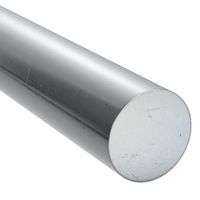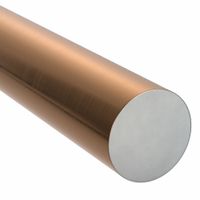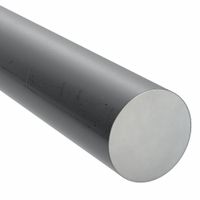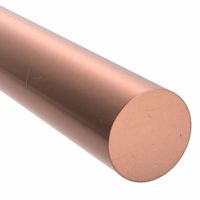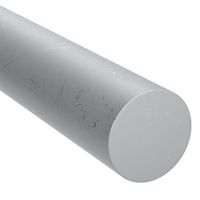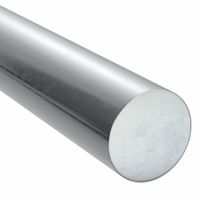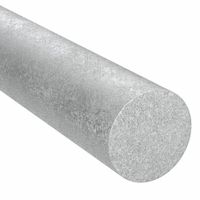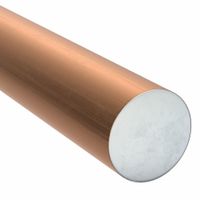Call +(254) 703 030 000 / 751 483 999 / 721 704 777
- Home
- Welding
- Filler Metals
- Tig Welding Rods
.....Read More
Frequently Asked Questions
What are the best TIG rods for stainless steel welding?
The best TIG rods for stainless steel welding are typically ER308L, ER309L, and ER316L, each suited for specific applications and types of stainless steel.
1. **ER308L**: This is the most commonly used TIG rod for welding 304 and 304L stainless steels. It offers excellent corrosion resistance and is ideal for general-purpose applications. The low carbon content minimizes carbide precipitation, reducing the risk of intergranular corrosion.
2. **ER309L**: This rod is used for welding dissimilar metals, such as joining stainless steel to carbon steel. It contains higher levels of chromium and nickel, providing superior strength and corrosion resistance. ER309L is also suitable for welding 309 stainless steel and can be used in high-temperature applications.
3. **ER316L**: This rod is used for welding 316 and 316L stainless steels, which are known for their enhanced corrosion resistance, especially in chloride environments. The addition of molybdenum in ER316L provides increased resistance to pitting and crevice corrosion, making it ideal for marine and chemical processing applications.
When selecting a TIG rod, consider the base metal composition, the operating environment, and the mechanical properties required. It's also important to ensure the rod matches the stainless steel grade being welded to maintain the integrity and performance of the weld.
How do I choose the right TIG rod size for my project?
To choose the right TIG rod size for your project, consider the following factors:
1. **Material Type**: Different materials require specific filler rods. For example, use ER70S-2 for carbon steel, ER308L for stainless steel, and ER4043 for aluminum.
2. **Material Thickness**: The thickness of the material being welded is crucial. For thin materials (less than 1/8 inch), use a smaller diameter rod (1/16 inch or 0.045 inch). For thicker materials, use larger rods (3/32 inch or 1/8 inch).
3. **Welding Position**: The position of the weld (flat, horizontal, vertical, or overhead) can influence rod size. Smaller rods are easier to control in out-of-position welds.
4. **Welding Current**: Match the rod size to the amperage range of your welding machine. Smaller rods require lower amperage, while larger rods need higher amperage.
5. **Joint Design**: The type of joint (butt, lap, corner, etc.) affects rod choice. For tight joints, smaller rods are preferable to ensure proper penetration and fill.
6. **Weld Appearance**: If aesthetics are important, choose a rod size that allows for smooth, consistent weld beads.
7. **Heat Input**: Larger rods can introduce more heat, which may be unsuitable for heat-sensitive materials. Smaller rods help control heat input.
8. **Skill Level**: Beginners may find smaller rods easier to handle, while experienced welders can manage larger rods for faster deposition rates.
9. **Project Specifications**: Adhere to any specific requirements or standards outlined for the project, which may dictate rod size.
10. **Trial and Error**: Conduct test welds with different rod sizes to determine the best fit for your specific application.
By considering these factors, you can select the appropriate TIG rod size to ensure strong, high-quality welds for your project.
What is the difference between ER70S-2 and ER70S-6 TIG rods?
ER70S-2 and ER70S-6 are both types of TIG welding rods used for welding carbon and low-alloy steels, but they have distinct differences in their composition and applications:
1. **Composition**:
- **ER70S-2**: Contains deoxidizers like aluminum, titanium, and zirconium, in addition to manganese and silicon. These elements help in welding over rust, mill scale, and other contaminants.
- **ER70S-6**: Has higher levels of manganese and silicon compared to ER70S-2, which enhances its deoxidizing properties and makes it suitable for welding on surfaces with moderate rust or mill scale.
2. **Applications**:
- **ER70S-2**: Preferred for welding on clean or slightly contaminated surfaces. It is often used in situations where the weld needs to be of high quality, such as in critical applications like pipelines, pressure vessels, and structural work.
- **ER70S-6**: Suitable for welding on surfaces with more impurities. It is commonly used in general fabrication, automotive, and construction industries where surface preparation might not be as thorough.
3. **Weld Characteristics**:
- **ER70S-2**: Produces a more stable arc and is known for its ability to produce high-quality welds with good mechanical properties. It is often chosen for its ability to handle less-than-ideal surface conditions.
- **ER70S-6**: Offers a more fluid weld pool and better wetting action, which can be advantageous in certain welding positions and for achieving smooth weld beads.
4. **Mechanical Properties**:
- Both rods provide similar tensile strength (around 70,000 psi), but ER70S-2 is often preferred for applications requiring higher toughness and ductility.
In summary, the choice between ER70S-2 and ER70S-6 depends on the specific welding conditions, surface cleanliness, and desired weld characteristics.
Can I use TIG rods for aluminum welding?
Yes, you can use TIG rods for aluminum welding. Tungsten Inert Gas (TIG) welding, also known as Gas Tungsten Arc Welding (GTAW), is a suitable method for welding aluminum. When using TIG welding for aluminum, it is essential to select the appropriate filler rod to ensure strong and reliable welds. Commonly used TIG rods for aluminum include ER4043 and ER5356.
ER4043 is an aluminum-silicon alloy that provides good fluidity and is often used for welding heat-treatable base alloys. It is known for its excellent corrosion resistance and is suitable for applications where aesthetics are important due to its ability to produce a bright, shiny finish.
ER5356 is an aluminum-magnesium alloy that offers higher strength compared to ER4043. It is commonly used for welding 5xxx series aluminum alloys and is preferred for applications requiring high strength and good corrosion resistance, such as in marine environments.
When TIG welding aluminum, it is crucial to use alternating current (AC) to break up the oxide layer on the aluminum surface, ensuring proper fusion. Additionally, using pure tungsten or zirconiated tungsten electrodes is recommended for AC welding of aluminum.
Proper preparation of the aluminum surface, including cleaning and removing any oxide layer, is essential for achieving high-quality welds. Preheating the aluminum workpiece may also be necessary, depending on the thickness and specific application.
In summary, TIG rods can be effectively used for aluminum welding, provided the correct filler material and welding techniques are employed.
How do I store TIG rods to prevent contamination?
To prevent contamination of TIG (Tungsten Inert Gas) welding rods, follow these guidelines:
1. **Clean Environment**: Store rods in a clean, dry area away from dust, dirt, and moisture. Contaminants can affect weld quality.
2. **Sealed Containers**: Use airtight containers or vacuum-sealed bags to protect rods from humidity and airborne contaminants. Desiccant packs can be added to absorb moisture.
3. **Temperature Control**: Maintain a stable temperature in the storage area. Avoid extreme temperatures that can cause condensation or material degradation.
4. **Original Packaging**: Keep rods in their original packaging until use. Manufacturers often provide packaging designed to protect against contamination.
5. **Vertical Storage**: Store rods vertically to prevent bending and to minimize contact with surfaces that might introduce contaminants.
6. **Separate Materials**: Store different types of rods separately to avoid cross-contamination. Label containers clearly to prevent mix-ups.
7. **Handling Precautions**: Use clean gloves when handling rods to prevent oils and dirt from transferring from hands to the rods.
8. **Regular Inspection**: Periodically inspect stored rods for signs of corrosion or contamination. Discard any rods that show visible signs of damage or contamination.
9. **Dedicated Storage Area**: If possible, have a dedicated storage area for welding materials to minimize exposure to contaminants from other processes or materials.
10. **Proper Inventory Management**: Use older stock first to ensure rods are used before they degrade over time. Implement a first-in, first-out (FIFO) system.
By following these practices, you can effectively prevent contamination of TIG rods, ensuring high-quality welds and prolonging the life of your welding materials.
What is the recommended amperage for different TIG rod diameters?
The recommended amperage for TIG welding varies based on the diameter of the tungsten electrode and the material being welded. Here are general guidelines for different TIG rod diameters:
1. **1/16 inch (1.6 mm) Rod:**
- Amperage Range: 30-90 amps
- Suitable for thin materials and precise welding tasks.
2. **3/32 inch (2.4 mm) Rod:**
- Amperage Range: 80-130 amps
- Commonly used for medium thickness materials.
3. **1/8 inch (3.2 mm) Rod:**
- Amperage Range: 100-180 amps
- Ideal for thicker materials and more robust welding applications.
4. **5/32 inch (4.0 mm) Rod:**
- Amperage Range: 150-250 amps
- Used for heavy-duty welding tasks and thicker materials.
5. **3/16 inch (4.8 mm) Rod:**
- Amperage Range: 200-350 amps
- Suitable for very thick materials and industrial applications.
These ranges are general guidelines and can vary based on the specific material being welded, the type of tungsten used, and the welding position. Always refer to the manufacturer's recommendations and adjust based on the specific welding conditions.
How do I prevent TIG rod contamination during welding?
To prevent TIG rod contamination during welding, follow these steps:
1. **Clean the Rods**: Before use, clean the TIG rods with a solvent like acetone to remove any oils, dirt, or residues. Ensure they are dry before welding.
2. **Proper Storage**: Store rods in a clean, dry environment. Use sealed containers or rod holders to protect them from dust, moisture, and other contaminants.
3. **Handling**: Always handle rods with clean gloves to prevent oils and dirt from your hands transferring to the rods. Avoid touching the rod with bare hands.
4. **Use Clean Tools**: Ensure that all tools and equipment, such as rod holders and clamps, are clean and free from contaminants.
5. **Avoid Contact with the Ground**: Do not let the rod touch the ground or any dirty surfaces during welding. Use a rod holder or keep it in a clean area when not in use.
6. **Proper Technique**: Maintain a consistent arc length and angle to prevent the rod from dipping into the weld pool, which can introduce contaminants.
7. **Shielding Gas**: Ensure adequate shielding gas coverage to protect the weld area and rod from atmospheric contamination. Check for leaks and proper flow rates.
8. **Regular Maintenance**: Keep the welding equipment, including the torch and cables, in good condition to prevent contamination from equipment failure.
9. **Avoid Cross-Contamination**: Use separate rods for different materials to prevent cross-contamination. Label and store them accordingly.
10. **Environmental Control**: Weld in a clean, controlled environment to minimize exposure to dust, dirt, and other airborne contaminants.
By adhering to these practices, you can significantly reduce the risk of TIG rod contamination and ensure high-quality welds.
